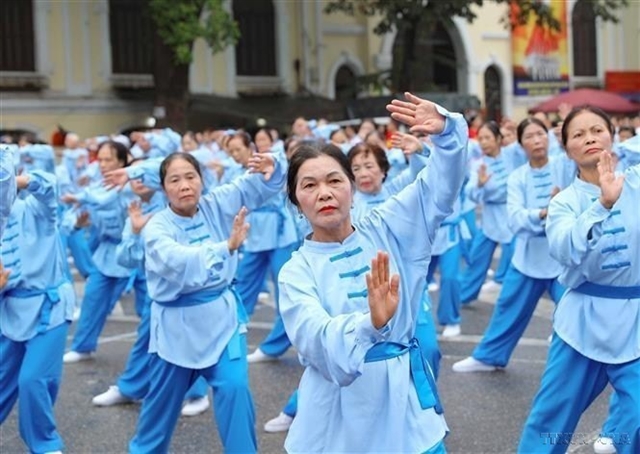The silver economy, a billion-dollar market in Vietnam

Hanoi, June 18 (VNS/VNA) - The aging population and the unique characteristics of the older cohort in Vietnam are golden opportunities for the country to develop a silver economy.
The older generation in Vietnam currently accounts for 8.3% of the total population, or 8.16 million.
It is forecast that the number will increase to 16.8 million people by 2039 and reach 25.2 million people by 2069.
Older people in Vietnam often face the burden of illness and can suffer from chronic diseases such as coronary artery disease, hypertension, diabetes, osteoarthritis, cancer.
Regarding spending ability, Vietnamese elderly people often have income from pensions, savings and investments and their spending ability depends on their level of financial stability and personal financial planning.
Regarding consumption habits, in recent years there has been a shift in the consumption behaviour of the elderly, with a tendency to increase spending on health, travel, education and entertainment.
The aging population and the unique characteristics of the elderly group in Vietnam pose many economic and social challenges, but there are also golden opportunities for the country to develop a silver economy, said Doan Van Binh, Vice President of the Vietnam Real Estate Association.
Speaking to VTC News online he said that, based on Vietnam's actual conditions and the experience of some countries, it was his opinion that the country should immediately begin researching, creating a vision, building policies and laws, specific strategies and action plans to activate and develop the silver economy.
To comprehensively develop the silver economy in Vietnam, first of all, it was necessary to have an accurate and complete vision and awareness of the needs, motivation and orientation of the silver economy, he said.
The rise of the silver economy reflected a societal re-evaluation of the elderly, which no longer viewed them as an economic burden, but recognises their contribution to society and their potential as consumers, he said.
The country should perfect the policy on the silver economy while the elderly should be a focus of the Party, State and community.
Policies on the silver economy should be developed with a focus on emphasising the role of the silver economy, orienting priority areas for development and supporting policies for the silver economy in Vietnam.
Binh also suggested perfecting current laws regarding the older population, since currently, Vietnam has many legal regulations related to the elderly, showing concern, care and promoting the role of the elderly in social life.
However, it is necessary to continue to improve the law in this direction as a basis and legal corridor for the development of the silver economy.
He also suggested determining the role of the silver economy in terms of the overall national economy, developing strategies including the National Strategy on the Vietnamese Elderly for the 2030 – 2050 period and develop an action plan specifically to activate and grow the silver economy.
He also recommended research into the scale and pervasiveness of the silver economy for the group of people aged 50 plus, according to international calculation standards.
In addition, Binh also highlighted the role of planning and construction; investment in technology and innovation; investment in education and training for the elderly; suitable job opportunities for the elderly and solutions to support the development of the silver economy, including both financial and non-financial solutions.
The concept of the silver economy originated from the term 'silver market' that appeared in Japan, the country with the highest proportion of people over 65 years old in the 1970s, to refer to the market for the elderly and covering sectors such as healthcare, banking, energy, housing, telecommunications, entertainment and tourism.
It is estimated that the world currently has over 761 million people aged 65 and older, this number is expected to increase to 1.6 billion people by 2050.
The global market for products and services for the elderly is estimated to be worth about 15 trillion USD in 2020.
The Asia-Pacific region is expected to see the fastest growth in the silver economy, driven by rapidly aging population in countries such as Japan, China and the Republic of Korea.
In Europe, the silver economy accounts for around 25% of GDP, with countries such as Italy and Germany having particularly high proportions of older residents.
The scope of the silver economy includes not only healthcare but also extends to many different sectors. This sector affects many areas of the economy including entertainment, transportation, food, security, healthcare, housing, insurance, digital services and more./.





